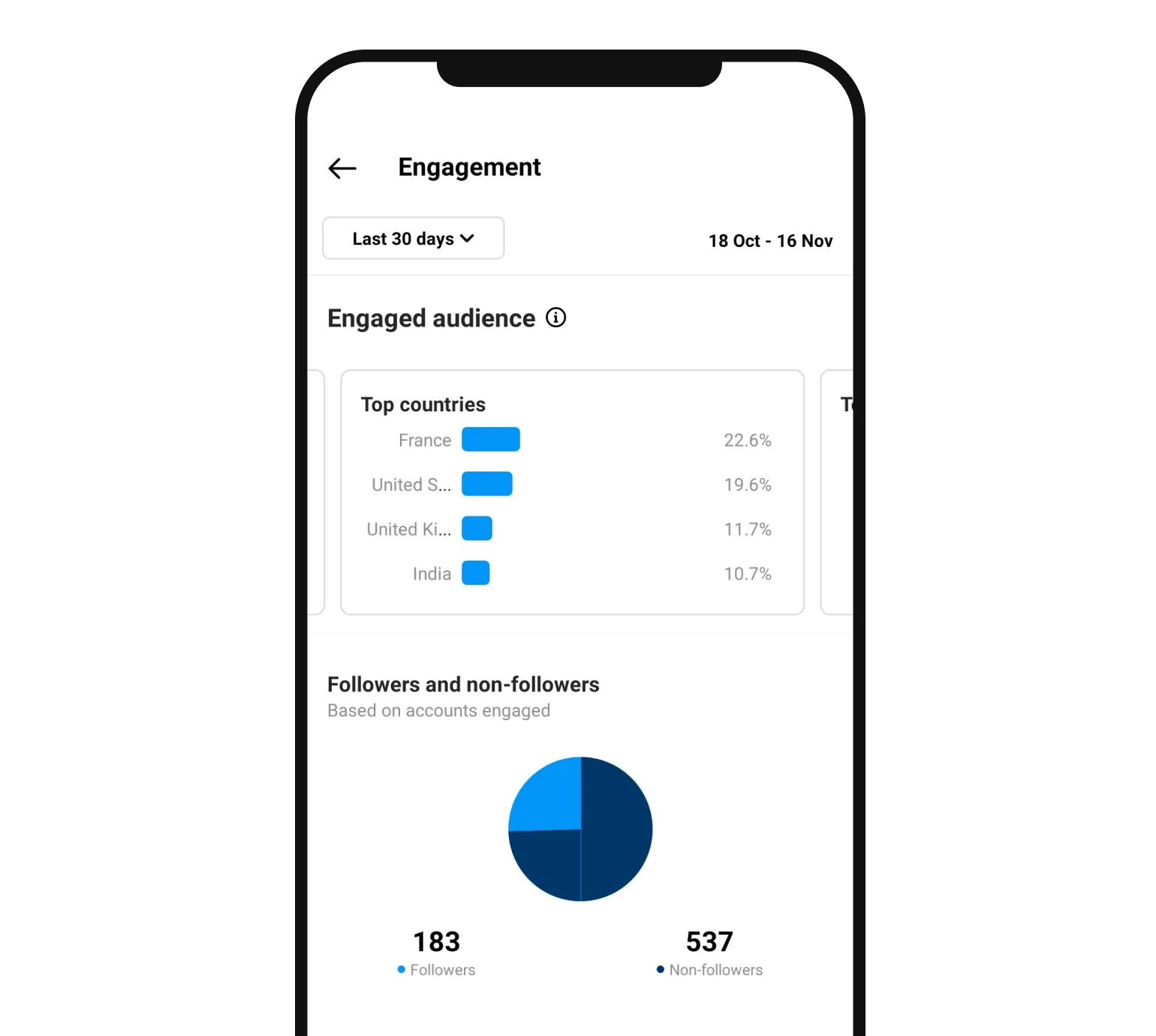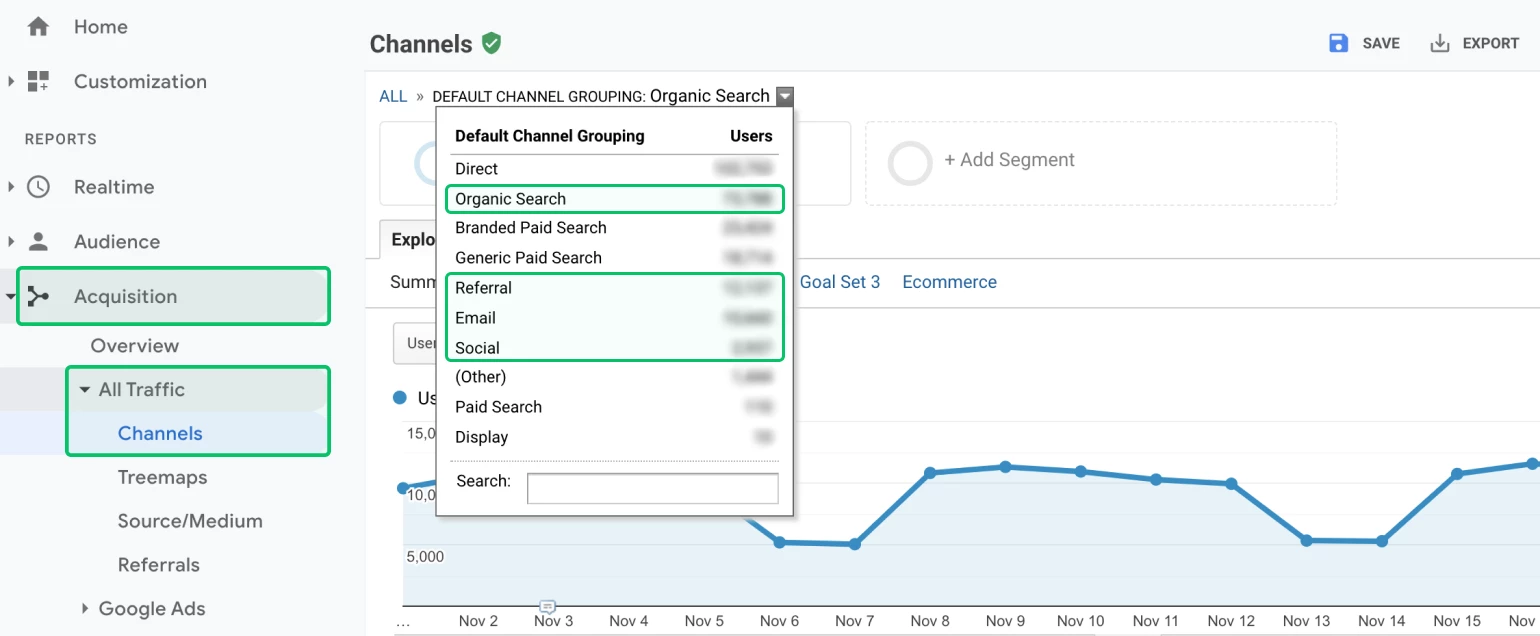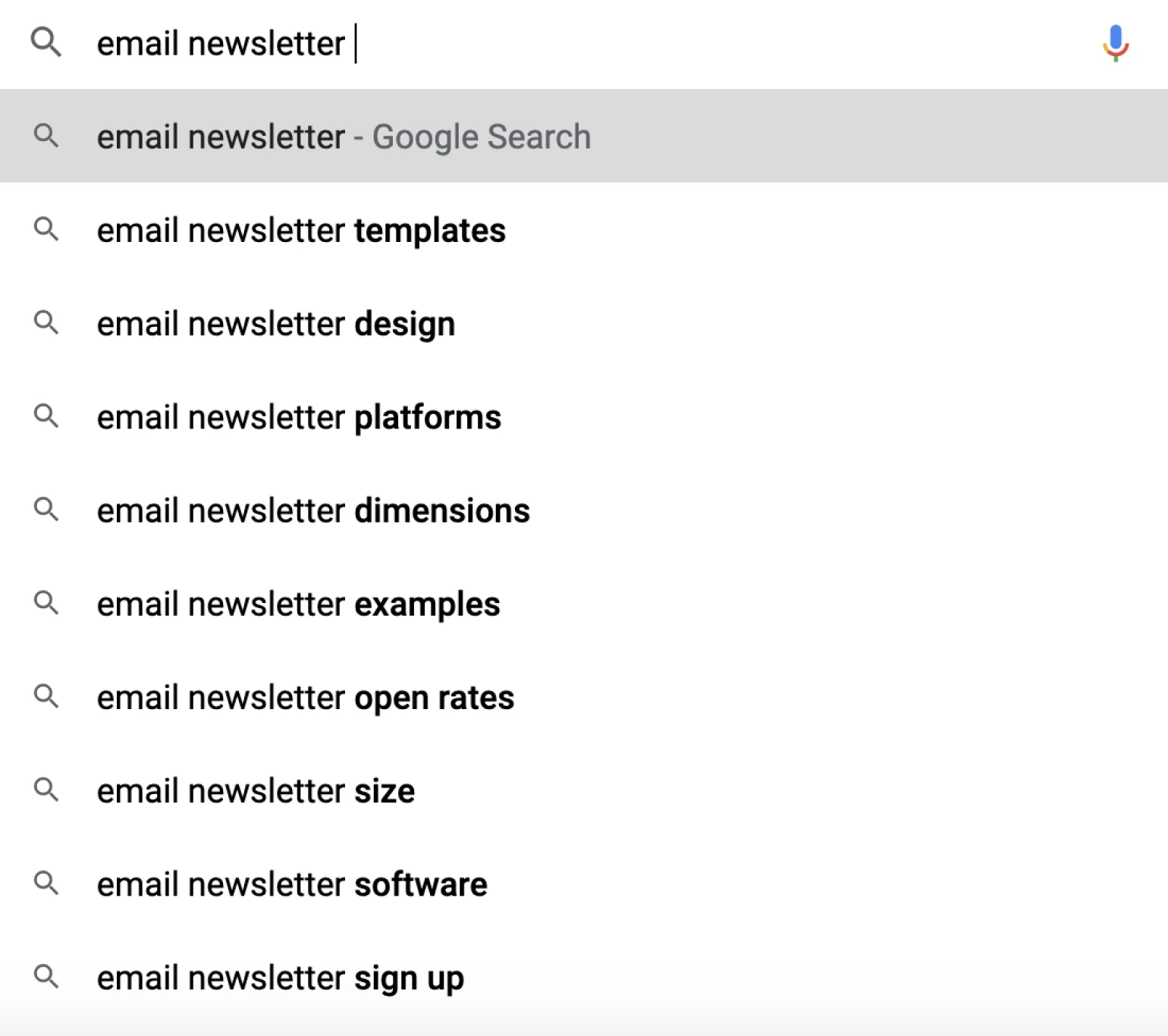How to never run out of content ideas
 People Experience Manager, Sthefani, cooking up some new ideas in Mexico.
People Experience Manager, Sthefani, cooking up some new ideas in Mexico.
Picture this: You launch your newsletter, the words are flowing and your subscribers are loving it. But then the inspiration slowly fades, and you get stuck in a rut.
Don’t fret! This happens to even the most seasoned of content creators. Brainstorming great content ideas is fun at first, but it’s easy to lose the spark later on. There’s even a name for it—“content creation burnout”—where it’s harder to think of new content and stick to your schedule.
Your target audience does need regular, interesting content to stay engaged. So if you’re wondering how to come up with content ideas all the time, we’ve got 7 ways to keep it as fresh as a daisy—even when you’re not feeling it.
Why bother keeping content fresh?
Content marketing is where you share your knowledge, products and services in different online channels, such as videos, newsletters, social media, blogs, podcasts, etc... A high-quality content strategy that delivers fresh content can help you:
Stay top of mind: When your audience gets regular updates, it’ll help your business to grow and stay visible. For example, did you know that websites with a blog attract 55% more traffic?
Maintain interest: With people being bombarded with content 2.5 hours a day on social media alone, delivering new content is the only way to keep engaging your audience.
Educate people: Sharing your knowledge about your industry and product attracts new leads and retains current customers. For example, 67% of people rely on content to help their purchasing decisions.
Now that you’re raving about the power of content, let’s see how you can create a well of ideas that will never run dry.
7 ways to come up with content ideas
At MailerLite, we strive to keep our content fresh and interesting (yes, we run into dry spells too 😉), and these 7 content creation gems have worked for us, big time.
1. Monitor community and social media channels
Some of the best and most effective marketing content answers people’s most pressing questions. How do you find out which questions people are asking? Go to where the conversations are: on community forums and social media posts.
Online communities
If you’ve already built your own online community, such as a Facebook group, or on Slack or Circle, then this is a great place to identify common questions. You can also just ask! Either run a poll or post asking members what topics they would like to be covered, what questions they have, and where they struggle the most. This will give you some potential topics to work with.
Or, if you don’t have a forum of your own, you can visit sites like Quora or Reddit to find discussions in your niche. Note the trending topics and plan your content accordingly.
Nurture your online community by creating opportunities for your audience to connect with you, and also with each other, in a more personal way. Providing content that’s useful and helps them to achieve their goals is key.
Social media content
Look at popular hashtags in your industry to find out what people are posting about. Plus, keep an eye on your social media marketing analytics to identify high-performing posts, videos and reels. The most popular ones could be repurposed into other forms of content. For example, if you have a YouTube video that worked particularly well, you could develop a newsletter on the same topic (here’s more on how social media and email can work together).
Facebook: To see your Page Insights, visit your business page and select Insights in the left menu
Instagram: Go to your profile and select Professional dashboard at the top of the page
Twitter: Click More in the left-hand menu, select Analytics, and click Get started to see your monthly report card
TikTok: Go to your account, select the three dots at the top right of the screen, go to Manage account, then click Switch to Pro account and select Creator or Business. You can then access analytics from your profile
You can also use your social media insights—such as these Instagram analytics below—to learn more about the demographics of your audience and then tailor fresh content around that. For example, if lots of your audience are based in New York, you could blog about ‘The top 10 coffee shops to visit in NYC’.

We asked Kata, our social media specialist, how to develop fresh content from social media, and she recommends:
Keeping track of your metrics, especially likes, comments and shares, to identify your best posts. If it has a higher-than-average like count, with many positive, insightful and developed comments (you should delete any bot and spam comments), and if it has a lot of shares, then the post has hit the right spot
Focusing on quality over quantity. Although consistency is good, your new content should deliver real value, every time, rather than just posting for the sake of it
Repurposing content for different social media channels. Your audience on Twitter is different from your audience on Instagram, so you can easily generate new content by adapting it for different platforms
Constantly coming up with new content ideas can be hard. Why not take advantage of previous posts that performed well, and tweak them a little bit?
2. Use Google tools for insights
At first glance, Google tools might look a little intimidating. But once you know where to look, they quickly become one of the most valuable areas of your content marketing toolbox—and the key to identifying some fresh new content creation ideas.
Google Analytics
You can use Google Analytics to get detailed reports on your website traffic and find out where your strengths lie. To get started, here are the most important things to look at.
Where are my page visitors coming from?
From your Google Analytics dashboard, go to Acquisition > All Traffic > Channels. You can then see how people are landing on your website.

This shows you which types of content (e.g. email newsletters, social media) are sending the most people to your website. For example, if you find that email is generating significantly more traffic, then you might want to focus your content marketing strategy on your newsletters.
Which website content is performing the best?
To identify which content is ticking all the boxes, you first need to define your goals. Ask what you want to achieve—whether that’s more sales, newsletter signups, or something else entirely. Then look at the Goals metrics and set up your own.
To do this, click Admin > View > + New Goal. Then you can either create a goal from a template, or create a custom goal or a smart goal (you can read more about creating goals here).
Here’s a sneak peek at some of our goals, for example.

You can also use the advanced settings to filter your page results, such as by blogs or landing pages.
Once you have identified which piece of content is generating the most clicks and conversions, you can create similar content to maintain that winning streak.
Google Autocomplete
One quick and easy way to get new content ideas is to enter your topic area or keyword into the Google search bar, and then see what suggestions come up. This will show you the most popular searches, giving you instant inspiration for your content strategy.
For example, we typed ‘email newsletter’ into the search engine, and you can see all the suggestions we got below. That’s at least 7 new blog posts or video tutorial ideas, right there!

Google Keyword Planner
If you want to have an idea of how many monthly searches a topic has, then you can enter it into Google Keyword planner, like this...

…You’ll then see a rundown of similar keywords, along with their search volumes—just like your very own content idea generator!

Google Trends
Using this tool, you can identify topics that have the highest interest, see which regions are searching for it the most, identify related topics and see related queries. You can also compare with other search terms to find the best content idea.
For example, if we search ‘email marketing’ in Google Trends, we learn that related queries right now include ‘strategic email marketing’ and ‘ecommerce email marketing agency’.

When using Google tools, you should first decide exactly what you want to achieve with your content—whether that’s more sales, more signups etc.—and then plan your topic research and tracking accordingly.
3. Refresh old content
Ever heard the saying “There is nothing new under the sun”? There’s a certain truth to it. You don’t have to pressure yourself to generate new ideas all the time. Instead, go back to your content calendar from last year and see what went well in the past. It may have the potential to be updated and get your audience excited about it all over again. Plus, it protects you from content decay, where it declines over time and loses organic traffic from Google, unless it is updated regularly.
Questions to ask yourself before choosing what to refresh
Is the content evergreen, or does it need constant updates? For example, a blog on “The best budget smartphones of 2021” may need to be refreshed several times a year, as all the new models are released. However, a blog on “How to build an email list” could be updated once a year, or even less, since best practices don’t change as often.
How is the content performing? You can analyze your content with Google Analytics, as described earlier, or Google Search Console. Another option is to use a third-party tool such as Ahrefs or SEMrush. If you see content that previously performed really well starting to taper off, then this is the perfect piece to consider for a refresh. If it doesn’t have any fluctuations or it has an upward trend, then you can leave it for another time.
Example: How to refresh an article
First, read the article and update all outdated information. For example, you might have shared statistics from a report from last year. You could update this with data from the current year, to make the information more up-to-date.
Next, analyze the top search results on Google to see what other information is missing in your piece. Have your competitors shared something that didn’t cross your mind? It might be worth adding to your new version (without plagiarizing, obviously). 😉
Then, do a keyword analysis using a tool like Google’s Keyword planner to establish search intent and find trending words and topics to add to your content. These might have changed since you first wrote it, so be open to adding new information or editing the current content.
Check all internal and external links to make sure that you don’t link to a broken page (it’s a bit disappointing when you click on a link and it takes you to a 404 not found).
Finally, publish the updates! If you want to, you can leave an editor’s note at the end of the article with the original publishing date. We often do this with our articles, just like this note below, because it’s confusing if people see old comments on the posts from several years ago, and are unsure how new the current content is.

Refreshed content lets you stay relevant and keep adding value. It’s quicker than starting something new and you should see results much faster. Plus, Google loves fresh and up-to-date content!
You can also repurpose content. If you wrote a great article, perhaps you could turn it into some viral video content. Or if you recorded a good podcast episode, post a snippet to your Instagram stories. Rather than constantly thinking of new ideas for each outlet, save time by adapting the same one for multiple channels.
4. Conduct interviews with influencers, customers and employees
Hearing from others in your industry can be refreshing—plus it generates its own content. It also gives you access to a wider audience, as your guest will usually share the interview with their followers as well.
You could record a podcast or a video and link it to your email newsletter, or write it up in a blog format. Our friends at The Remote Company did this in this blog on home office setups, where 15 team members shared their ideas. Gaining input from others is an easy way to generate fresh content, and then all you have to do is put it together and hit publish!
To make your life easier, we’re sharing a template we use to invite others for an interview.
Hello [Name],
I recently [read your book/ saw your Tweet/ attended your webinar], and I was struck by how [insert compliment].
I run a [blog/ podcast/ YouTube channel] called [x], and it’s focused on [y]. Since seeing your work, I think you would be a great fit for an interview. I would love to talk to you about [x] and [y], and hear more about [z]. We’d chat via [written form/ Zoom/ podcast app etc.], and it shouldn’t take longer than [x] minutes.
It will be shared with my [x] social media followers and [x]-strong email list. I’ll also create some promotional graphics which you can share with your own following if you would like to.
Let me know what you think, and if you’re interested, we can book a time to get things rolling.
In the meantime, have a great day!
[Name]
Once you’ve booked your guest and are prepping for the interview, remember that:
Mindful listening is one of the major keys to getting more content. When you give people space to talk, they tend to explore themes you hadn’t considered, which makes the conversation (and content) much deeper and richer. We recommend recording the interview so you can stay engaged and not worry about taking notes.
It’s important to be active in the conversation without taking over. People are willing to share more when they feel like they’re being listened to
Micromanaging is a conversation-killer. Stick to a structure, but don’t be so rigid that people can’t talk freely or explore other interesting topics
Finding common interests is a great way to get people excited and make them feel comfortable talking with you. Before starting the interview, take 10 minutes to chat and set them at ease
Keeping it personal is key...
One of the biggest lessons I learned in interviews is that if I show some vulnerability, my guest is much more likely to share their own experiences and go deeper, as well.
5. Run a survey
Surveys can give a temperature reading on what your audience really wants. They’re easy to set up, and you can even share the survey results to make everyone feel involved (a form of user-generated content)!
One of the most straightforward ways to do this is through an email survey. These allow your subscribers to answer directly within the email, so there’s no hassle with redirects or email replies—meaning you should get plenty of responses. Check out this video tutorial to see how to set up an email survey with MailerLite.
Some things to consider when creating your survey:
Don’t overdo it. Even a simple, one-question survey can be enough to get the answers you need
You don’t have to explicitly ask for a roundup of new content ideas. Instead, you could gather questions for a Q&A, ask people to vote on their favorite topics so far, or let them submit testimonials
Use the survey as a form of engagement. When done right, you can nurture a positive conversation with your audience and make them feel involved
Email surveys are great for finding insights from people who are already interested in your business. They also really shine as an email engagement tool that strengthens subscriber relationships.
6. Check out the competition
Keeping tabs on your competitors is a smart way to ensure you are not missing any big industry trends. Competitor content gives you clues on what they care about and what they think their customers care about.
Your goal is not to copy competitors, but to identify gaps in your own content strategy that need to be filled. And of course, you want to fill those gaps with content that is unique to you and your business.
Once you’ve identified your competitors, you can track trending topics by doing a competitor analysis every quarter. Here’s a simple template we use to stay ahead.

It’s important to be aware of what your competitors are up to. Identify opportunities, and then create your own content that is more comprehensive and adds value to your audience.
7. Read blog comments for new ideas
The comments section of your blog can bring a wealth of information, especially popular FAQs. For example, when we were refreshing our best time to send an email article for this year, we remembered this comment that we had received for last year’s version.

It was unclear which time zone we meant when listing the best sending times. We realized we needed to make this clearer in the new version of the article, so we added the extra information below. Granted, it was a small tweak—but it clarified things for our readers, making the content even more valuable.

Following the conversation with your readers will help you to identify anything you missed the first time, and it can also create more opportunities for upcoming content. If you notice a question that crops up again and again, it might be a hint for you to start writing that next article.
Check your comments section regularly. It’s important to nurture those conversations so that you can keep people engaged and find inspiration for new content.
With MailerLite, you can build a professional website and blog without all the hassle—thanks to the straightforward drag and drop editor. Plus, with RSS to email campaigns, you can automatically notify your audience when you release a new article. An effortless way to fire off new content. 🎉
Bonus hack: Keep this MailerLite list handy
Even with all these tips, it’s normal to suffer from the occasional bout of content creation burnout or writer’s block. We aren’t robots, after all! That’s why we created this list of 130 content ideas for your next email (it also works for other forms of content, as well). So if you’re having an off day, just open up this list and pick whatever takes your fancy. Job done!
*Curtains drop*
And now it’s over to you! When searching for new content ideas, remember to:
Keep an eye on your social media and community channels
Make the most of Google tools to identify your most popular content
Regularly update older content to optimize performance
Interview people in your industry to switch things up
Run a survey to identify what’s most important to your audience
Know what your competitors are currently doing
Read blog comments for inspiration

